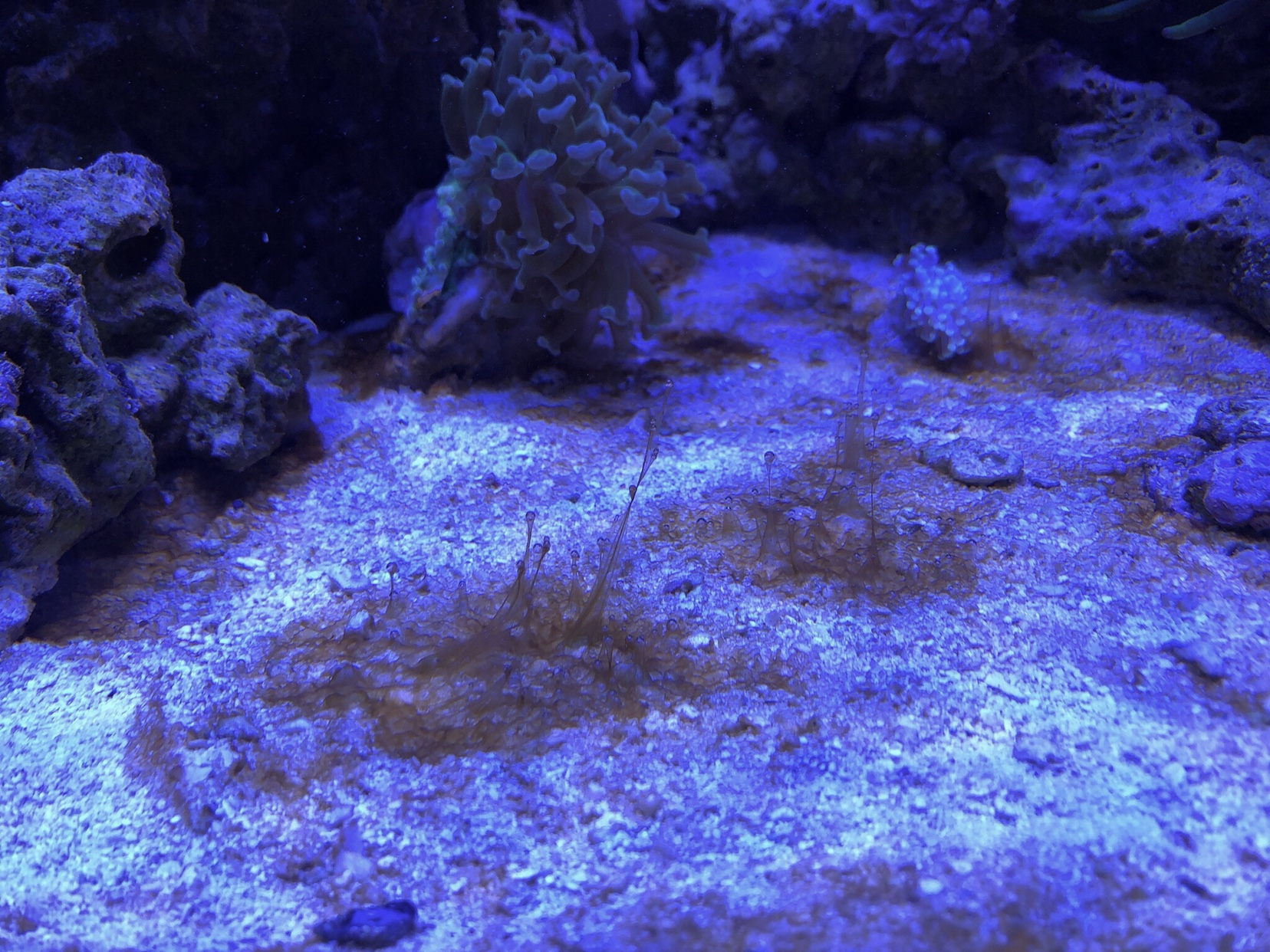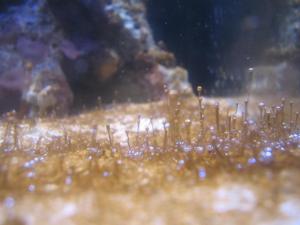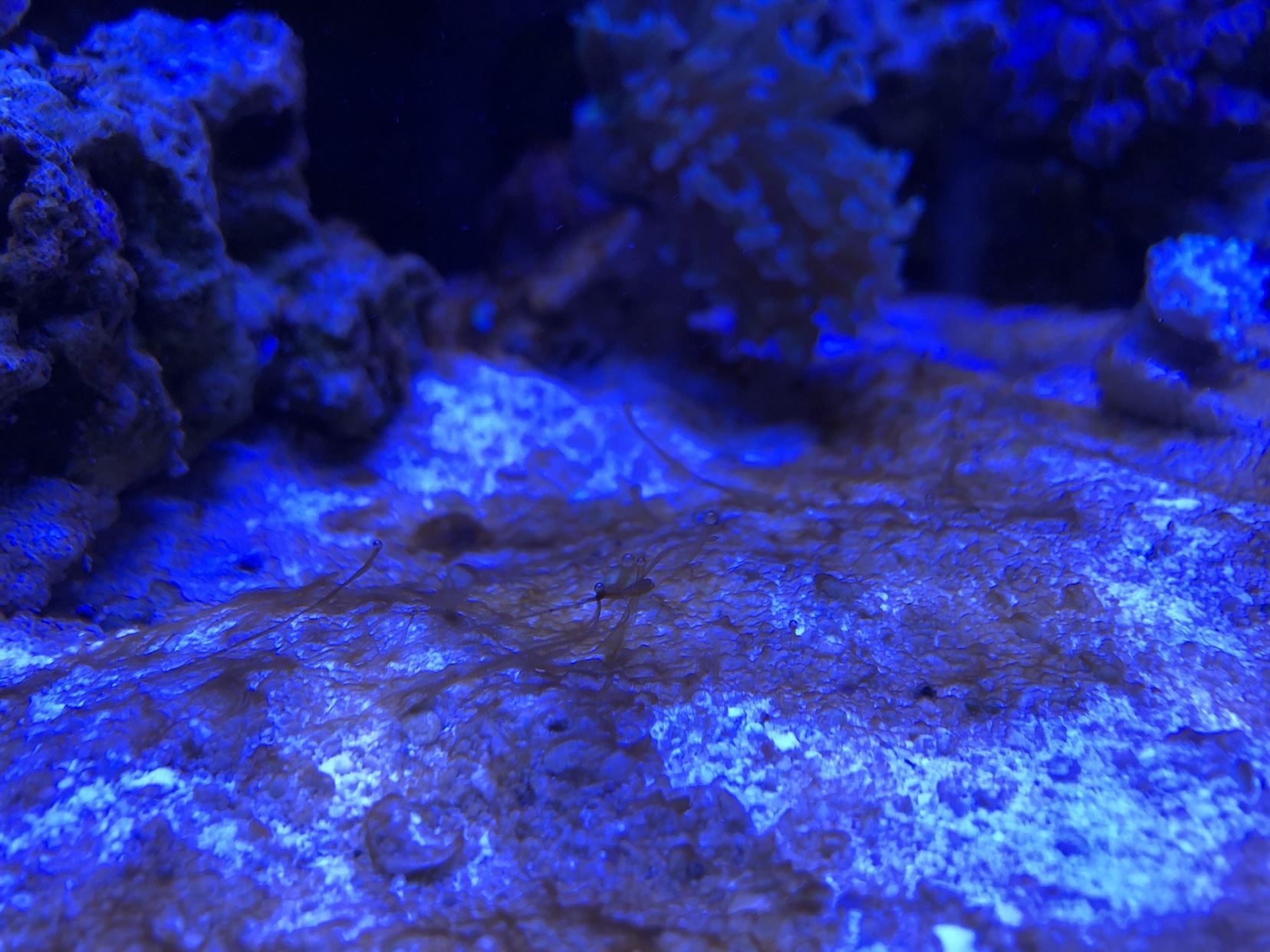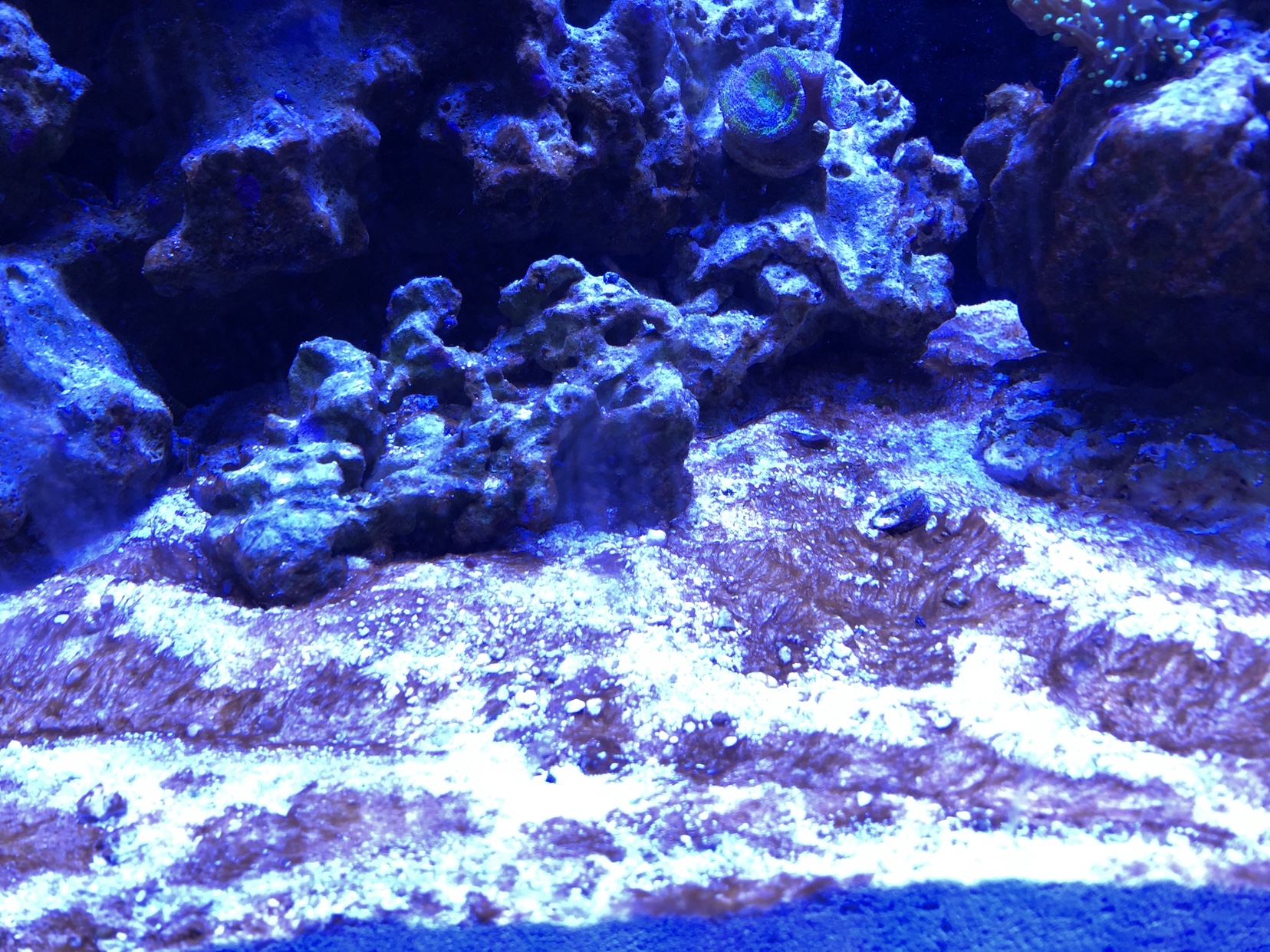- Joined
- May 3, 2017
- Messages
- 104
- Reaction score
- 67
We’ve been dealing with an obnoxious algae problem for over 2 months now. Quick overview of our tank:
- 90 gallon tank setup in March
- Running a skimmer, GFO, and carbon
- Weekly 10-15% water changes
- RODI water using Red Sea Coral Pro Salt
- Dosing system setup for alkalinity and calcium
- Also use Red Sea trace elements
- 2 Hydra 52 lights, come on at 8am, 4 hour ramp up/down, high point of 60% blue/violet 30% white, by 7pm they’re on 5% blue, completely off at 11pm
- 2 Neptune WAV powerheads
- Ammonia 0, Nitrites 0, Nitrates less than 5, Phosphates .02
- ALK 9.3 CA 420 MAG 1400
Livestock:
- Purple Tang
- Flame Angel
- Potters Angel
- Royal Gramma
- 2 Clownfish
- Sleeper Goby
- Watchman Goby
- 2 cleaner shrimp
- Roughly 20 blue legged hermit crabs (they keep reproducing)
- Roughly 20 snails, mix of turbo, nassarius, cerith, trochus (they also keep reproducing and getting eaten by the hermit crabs)
- Urchin
- Brittle Sea Star
- Condy Anemone
- BTA
- 10 smallish coral frags, mostly LPS
The problem started late September. We had removed all the fish from the tank because 2 of them died due to what we think was chemical warfare in the tank. We weren’t running carbon at the time and an acan frag fell into a torch coral which seemed to start off a chain reaction of some very annoyed corals. We added a carbon reactor to our tank and did some extra water changes for 3 weeks. The corals started to look better and we added the fish back in. It was during this time that the brown algae sprung up. Because there weren’t any fish in the tank I wasn’t feeding the tank other than occasionally spot feeding the coral Coral Chili. The tank never had an ammonia spike and nitrates never went over 5.
So here we are over 2 months later and we just can’t get rid of this stuff. At first I thought it was diatoms but now I’m leaning more towards dinos because it will develop long strings with bubbles at the end. I clean the sand about once a week and try to suck it out but it will be back within hours. Would a blackout help?

- 90 gallon tank setup in March
- Running a skimmer, GFO, and carbon
- Weekly 10-15% water changes
- RODI water using Red Sea Coral Pro Salt
- Dosing system setup for alkalinity and calcium
- Also use Red Sea trace elements
- 2 Hydra 52 lights, come on at 8am, 4 hour ramp up/down, high point of 60% blue/violet 30% white, by 7pm they’re on 5% blue, completely off at 11pm
- 2 Neptune WAV powerheads
- Ammonia 0, Nitrites 0, Nitrates less than 5, Phosphates .02
- ALK 9.3 CA 420 MAG 1400
Livestock:
- Purple Tang
- Flame Angel
- Potters Angel
- Royal Gramma
- 2 Clownfish
- Sleeper Goby
- Watchman Goby
- 2 cleaner shrimp
- Roughly 20 blue legged hermit crabs (they keep reproducing)
- Roughly 20 snails, mix of turbo, nassarius, cerith, trochus (they also keep reproducing and getting eaten by the hermit crabs)
- Urchin
- Brittle Sea Star
- Condy Anemone
- BTA
- 10 smallish coral frags, mostly LPS
The problem started late September. We had removed all the fish from the tank because 2 of them died due to what we think was chemical warfare in the tank. We weren’t running carbon at the time and an acan frag fell into a torch coral which seemed to start off a chain reaction of some very annoyed corals. We added a carbon reactor to our tank and did some extra water changes for 3 weeks. The corals started to look better and we added the fish back in. It was during this time that the brown algae sprung up. Because there weren’t any fish in the tank I wasn’t feeding the tank other than occasionally spot feeding the coral Coral Chili. The tank never had an ammonia spike and nitrates never went over 5.
So here we are over 2 months later and we just can’t get rid of this stuff. At first I thought it was diatoms but now I’m leaning more towards dinos because it will develop long strings with bubbles at the end. I clean the sand about once a week and try to suck it out but it will be back within hours. Would a blackout help?






















